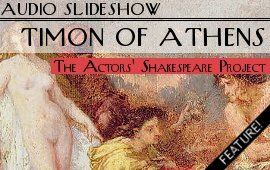 I spotted this hat on the #1 bus the other day and though I don’t want to become a ranting Shepard Fairey hater, I felt I should at least draw some attention to his . The AP, in a , is now counting OBEY Clothing as a defendant in the suit. Now, I thought only long-dead artists could profit off of apparel sales, and even then it’s typically the tote bags and umbrellas sold in museum gift shops, but Fairey seems better able to capitalize on his pictures than probably any other artist in history, at least among those respected enough to get solo retrospectives at major institutions. To think Warhol was controversial for ‘mass producing’ prints from the same screens, or having assistants do it for him–this actually still raises .
I spotted this hat on the #1 bus the other day and though I don’t want to become a ranting Shepard Fairey hater, I felt I should at least draw some attention to his . The AP, in a , is now counting OBEY Clothing as a defendant in the suit. Now, I thought only long-dead artists could profit off of apparel sales, and even then it’s typically the tote bags and umbrellas sold in museum gift shops, but Fairey seems better able to capitalize on his pictures than probably any other artist in history, at least among those respected enough to get solo retrospectives at major institutions. To think Warhol was controversial for ‘mass producing’ prints from the same screens, or having assistants do it for him–this actually still raises .
that are far more arcane than the AP Obama photograph in question and well traces the Fairey controvers(y/ies).
Left: Still from Michael Anderson’s 1956 adaptation of "1984." Right: Fairey's poster.
Artists from Picasso to Duchamp to Warhol have employed appropriated images and objects in artwork, but it’s never been a serious issue, or at least one tackled by copyright courts, because artists don’t typically profit off trademarked images, like those that appear on t-shirts and sweatshirts. Artists usually seek notoriety, commissions, and the sale of original art objects. Obey Clothing may have started with just hip t-shirts, but Fairey is now branding jeans, dresses, and jackets that don’t even incorporate Fairey or Fairey-like (?) imagery. They’re typical of the urban-hip garb sold in the causal departments of mid-range department stores.
It’s become hackneyed to say someone has sold-out, but does an artist retain his artistic license when he (or whomever is sending him checks) is acting under a business model rather than an artistic one? I don’t think so. Shouldn’t he be held to the same legal standards to which we hold the corporate world? He defends himself with fair use, a defence (not a right) handled on a case by case basis and not helped if you’re selling products or not engaging in explicit parody.
I don’t really dig on ‘political art,’ because it usually results in a transitory one-liner that rarely transgresses the forms of the advertisement, propaganda poster, or political cartoon. I do dig appropriated imagery, provided the act of appropriation has significance, and the blurring of boundaries between art and design, poster and painting, and maybe even gallery and retail space. But it seems Fairey has and continues to do everything possible to discredit himself and his work. The ICA show, now at the Pittsburgh Warhol Museum, may boost attendance for these institutions, but the museums risk discrediting themselves with Fairey’s increasing tainted political ‘message’ on corporate culture–something he seems no more adverse to than . I keep looking for meaning in his commercial participation to back up the pop-radical message of his stuff and words, but I just don’t see it. I’d probably like him more if he had the affected shallowness and apathy of Warhol.
I wonder if Obama is kicking himself?




